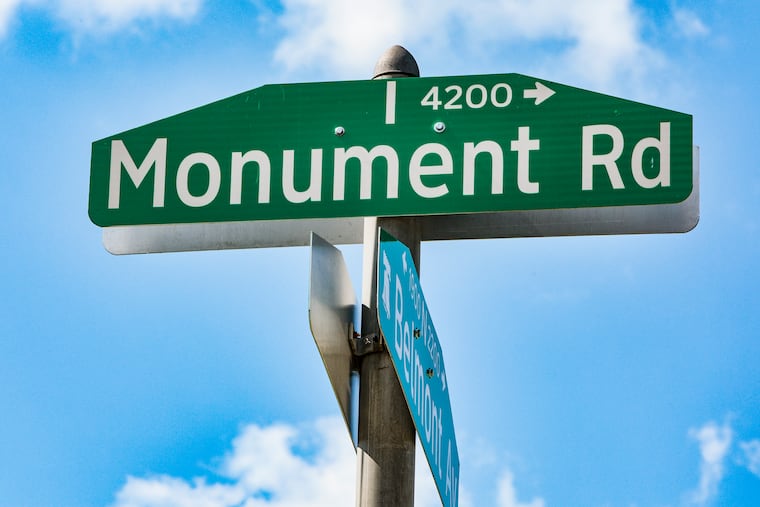It’s called Monument Road. But where is the monument?
The obelisk-shaped monument was once located on a farm belonging to Judge Richard Peters near Belmont Mansion.

Monument Road, the seemingly ordinary road that passes the sprawling greenery of Fairmount Park, has a mystery behind it — one tied to haunted breweries, curses, and Revolutionary War horses.
The stretch of road from Lancaster Avenue to City Avenue was originally named Peters Road, after a long-standing prodigal family of Philadelphia, but was changed to Monument Road in 1886, according to the Historical Street Name Index.
But the question remains: What is the monument? That’s what one reader asked through Curious Philly, The Inquirer’s forum for answering questions about the city and region.
The monument no longer exists, but when it did, it was located on a farm belonging to Judge Richard Peters near Belmont Mansion in West Fairmount Park before being destroyed.
Who owned the monument?
Monument Road was named after a monument made by Peters, who served as secretary of the Board of War for the Revolutionary Army and Pennsylvania delegate to Congress under the Articles of Confederation.
Peters also served as the speaker of the Pennsylvania Assembly, Pennsylvania state senator, and judge of the U.S. District Court. With his high stature, he hosted a number of Founding Fathers at his estate at Belmont Mansion, including George Washington, John Adams, Thomas Jefferson, and James Madison.
What did the monument look like?
The monument was a rough stone structure in an obelisk shape, according to a Philadelphia Times report from the time. Its exact height is unknown.
Why was the monument made?
After the monument was made — it’s unclear exactly when that happened — the reason for what it stood for remained widely unknown, with neighbors and townsfolk circulating a number of theories as reported in papers at the time. But regardless of the reason for its existence, it was widely accepted that the monument was haunted, according to a Philadelphia Times article from 1884.
Some said the monument was in honor of the men killed in Gen. Edward Braddock’s defeat at the Battle of the Monongahela; others believed that it marked the spot where Peters saw his future wife.
According to the article, the monument was actually built for the horses who fought and aided soldiers in the Revolutionary War.
Supposedly, while George Washington set up camp in the area near Belmont Mansion, it was nearly impossible to secure enough food and water, and as a result, many horses died.
Peters is said to have erected the monument to honor the memory of the fallen horses, supposedly saying that even animals deserved remembrance for dying for their country. Peters himself never officially disclosed what the monument was commemorating, but close friends detailed the reason in the newspapers at the time.
What happened to the monument?
The monument used to be on one of Peters’ farms, which was later acquired by a British man named Austin Anstin. Anstin wished to build a brewery on top of the land called, “Austin’s Belmont Ale,” but was more commonly referred to as the “Haunted Brewery” due to the curse that befell Anstin.
According to the Philadelphia Times, when Anstin wanted to build his brewery, he had to get rid of the monument in order to lay the foundation
However, when he removed the monument in the 1860s, the theory described in the Philadelphia Times is that he disturbed the ghosts of the monument — thought to be Revolutionary War patriots or even Peters — and was cursed as a result.
The brewery failed, and Anstin lost much of his property to the state, with many townspeople blaming the curse from the monument for the troubles he suffered.
Where is the monument now?
The monument was destroyed by Anstin, but the closest location to where the monument would have been is on the neighboring farmland near Belmont Mansion. Those interested can take a tour of Belmont Mansion, and while visitors can’t see the monument anymore, they can enjoy the gorgeous landscaping and historical memorabilia of Peters, the monument’s owner.